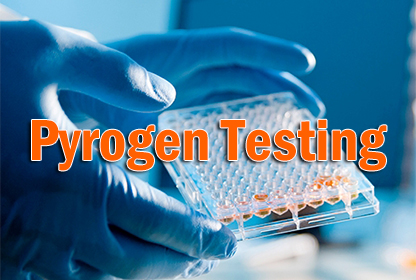현재 위치:홈 > 뉴스현황 > Press Events > Pyrogen Testing Meth...
저자: 업로드:2017-09-12 조회수:
Pyrogen testing defines a process used by drug manufacturers to determine if bacterial toxins are present in vaccines and drugs that might cause fever when used on humans. It determines if microbes or their metabolites are present in intravenous solutions during the manufacturing process. The most common and oldest form of pyrogen testing consists of injecting drugs into rabbits to determine if a fever develops. A newer test uses blood from the horseshoe crab to test for toxins.

2. It was used in positive test during last two weeks or negative test during last two days.
Pyrogen in Parenterals Method for Pyrogen Test:
The pyrogen testing is performed in an air conditioned room. The food and water is withheld to rabbit overnight. Clinical thermometer is inserted in the rectum of each rabbit to a depth of not less than 7.5 cm. Two readings of temperature of rabbit in normal conditions should be taken at the interval of half an hour before start the test and mean of the both should be calculated to determine the initial temperature.
Pyrogen Test Results:
The response of each rabbit is detected by difference of initial temperature and the highest temperature recorded. The response of all three rabbits gives the sum of responses and can be concluded as:i) If the sum of responses dose not greater than 1.4°C and any of rabbit shows the response less than 0.6° C, the product passes the test.
ii) I sum of responses is greater than 1.4 °C or any of rabbit shows the response 0.6 or greater, continue the test using 5 rabbits.
iii)If test is done using 5 rabbits, than if sum of responses of all 5 rabbits is greater than 3.7°C and the individual response of not more than three rabbits is greater than 0.6°C, the product passes the test.